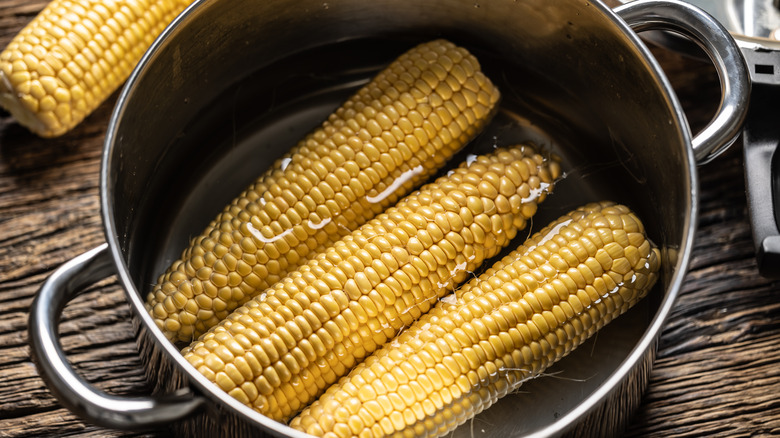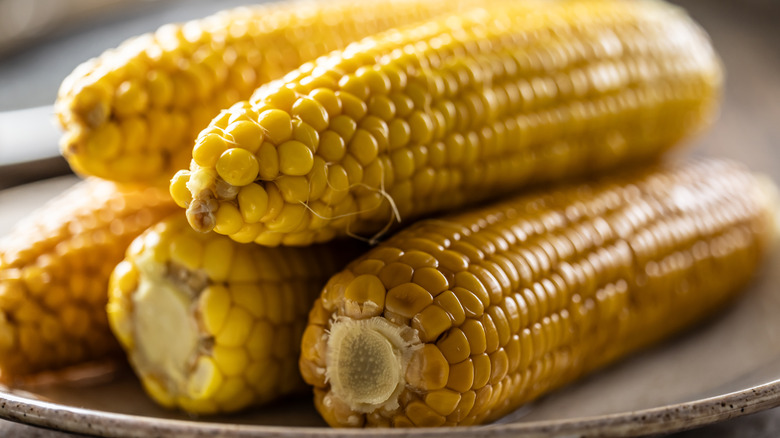
Simpleimages/Getty Images
One of the most satisfying corn recipes remains good old-fashioned corn on the cob, but even a task as seemingly simple as boiling a few ears requires some finesse. The general consensus seems to be boiling your corn for three to five minutes. However, those seeking the perfect snap and sweetness wonder when precisely within this timeframe to grab those tongs. The truth is, there's no definite answer, so you'll need to be vigilant.
A big mistake people make when boiling corn is setting a timer and walking away. The trick to the perfect corn on the cob is watching the pot closely throughout the cooking process. Corn has some noticeable tells that it's ready to eat. First, you'll notice a minor color change. When uncooked, corn has a pale yellow shade. As it cooks, that hue darkens slightly to a more golden hue. The kernels will also increase in size, but only to a small degree. You can also pay attention to the smell. When the scent of corn begins to dominate your kitchen, it's probably done.
Boiling corn: a topic of debate

Simpleimages/Getty Images
Some say you shouldn't boil corn at all because it can lose nutrients or that you should make some major changes to your boiling process. Scientifically speaking, cooking corn requires a delicate balance. Boiling corn gelatinizes the starches, which creates a more palatable taste and texture. However, high temperatures also trigger the breakdown of pectin, which helps corn hold its shape. To put it in laymen's terms, we want corn to soften but not to the point it's mushy or shriveled.
A cooking process that simultaneously gelatinizes starches and breaks down pectin poses a potential problem. So, what's the fix? Good old fashioned boiling is, of course, still an option as long as you watch the pot closely and remove your corn when it's done. However, you can also experiment with other methods that mitigate boiling's drawbacks.
Some advocate bringing your water to a boil, adding your corn, and immediately switching off the burner. This way, your corn catches some heat but not enough to ruin its structural integrity. There's also the "cold start method," which takes longer but may yield better results. Place your corn in a pot of cold water, heat it to 180 degrees Fahrenheit, then switch off the heat and cover the pot. Leave your corn for a minimum of 10 minutes. With all of these methods, use signs like color, plumpness, and smell to determine when your corn is done.



